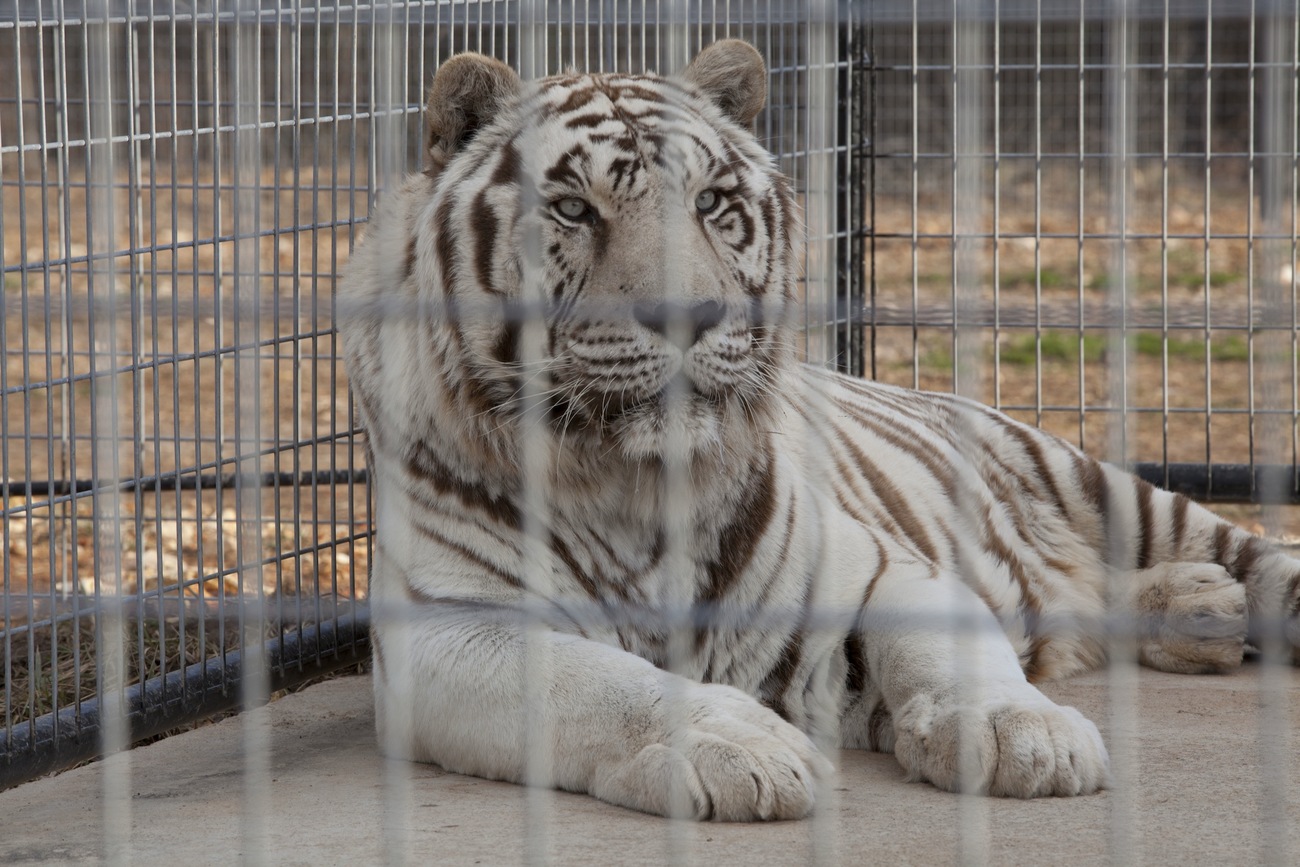Minka Kelly
the truth behind white tigers
the truth behind white tigers

As a Global Ambassador for the International Fund for Animal Welfare (IFAW), I’ve known for years that there are more tigers in captivity in the U.S. than remain free in the wild today. Hearing this stunning fact never fails to shock me.
I’ve had the opportunity to visit numerous accredited sanctuaries over the years and the stories of rescued animals are heart-shattering. From mistreatment to inhuman conditions to speed-breeding for profit, the list of offenses is beyond words. I sincerely believe that if each person had the opportunity to talk with a sanctuary director about the suffering of big cats across the U.S., most would do whatever is in their power to stop this ongoing abuse.
I’ve had the privilege of seeing two white tigers up close during my time with IFAW. Upon my first encounter, I was struck by their beauty and recall thinking these were the most magnificent animals I had ever seen. When I learned the truth, I was both heartbroken and infuriated. White tigers are not a distinct subspecies at all, nor are they actually found in the wild.
These tigers are specifically the result of inbreeding and are often born with severe deformities and health conditions that lead to a lifetime of chronic pain and suffering. These white tigers with facial deformities abound in private captivity—in undisclosed large numbers. The reason you don’t often see them on popular big cat Instagram accounts is because they are often euthanized or hidden away. Their visible conditions keep them from bringing in money while their deformities reveal to the world the cruel truth about white tigers.
It’s not difficult to understand how things like this happen—and happen so often. “Tiger cubs for sale” is a trending search term on Google for a key reason. Nefarious businesses including pseudo-sanctuaries profit immensely from lying to the general public and abusing their animals. Their revenue lies in ‘wowing the crowd’ with what they claim to be ‘perfect specimens’ of big cats on display. The truth is nothing of the sort.
If you visit a facility or animal display that is marketed as a “sanctuary,” but which allows you to physically interact in some way with a tiger, lion or other dangerous feline – that is NOT a true sanctuary. A true sanctuary values the well-being of the animal and ensures its complete separation from the public and often from the animal’s keepers as well. These businesses will claim close ties to conservation. The reality however is that they do nothing to assist in that conservation—they do nothing to help their animals’ counterparts in the wild. Their practices, claims, and sadly, the messages they deliver to the public day in and day out, are fraught with dangerous messages that only continues the cycle of suffering for these captive animals.
Let me be clear. The tiger cubs you see on Instagram often being fed from a bottle or posing for a photo were not “rescued from the wild”—rather, they are likely products of speed-breeding, where animals are bred in unnaturally short periods of time to maximize profit and cub numbers. Atop that, they are constantly mistreated in other ways as well, including being deprived of food or ‘formula’ to ensure they will suckle at the right moment. In short, it is reprehensible
End the exploitation of big cats
We all have an obligation to do more to save iconic big cats, and now is the time. If you live in the United States, thank your Senators for supporting the Big Cat Public Safety Act which was signed into law by President Biden in December 2022. If you live outside of the U.S., you can add your voice to our global petition—and pledge to take safe selfies that respect animals, not endanger them.
We have the power to change the course of history for big cats around the world, and it starts with what we do here at home.
-Minka Kelly, Actress and IFAW Global Ambassador
Related content
Every problem has a solution, every solution needs support.
The problems we face are urgent, complicated, and resistant to change. Real solutions demand creativity, hard work, and involvement from people like you.